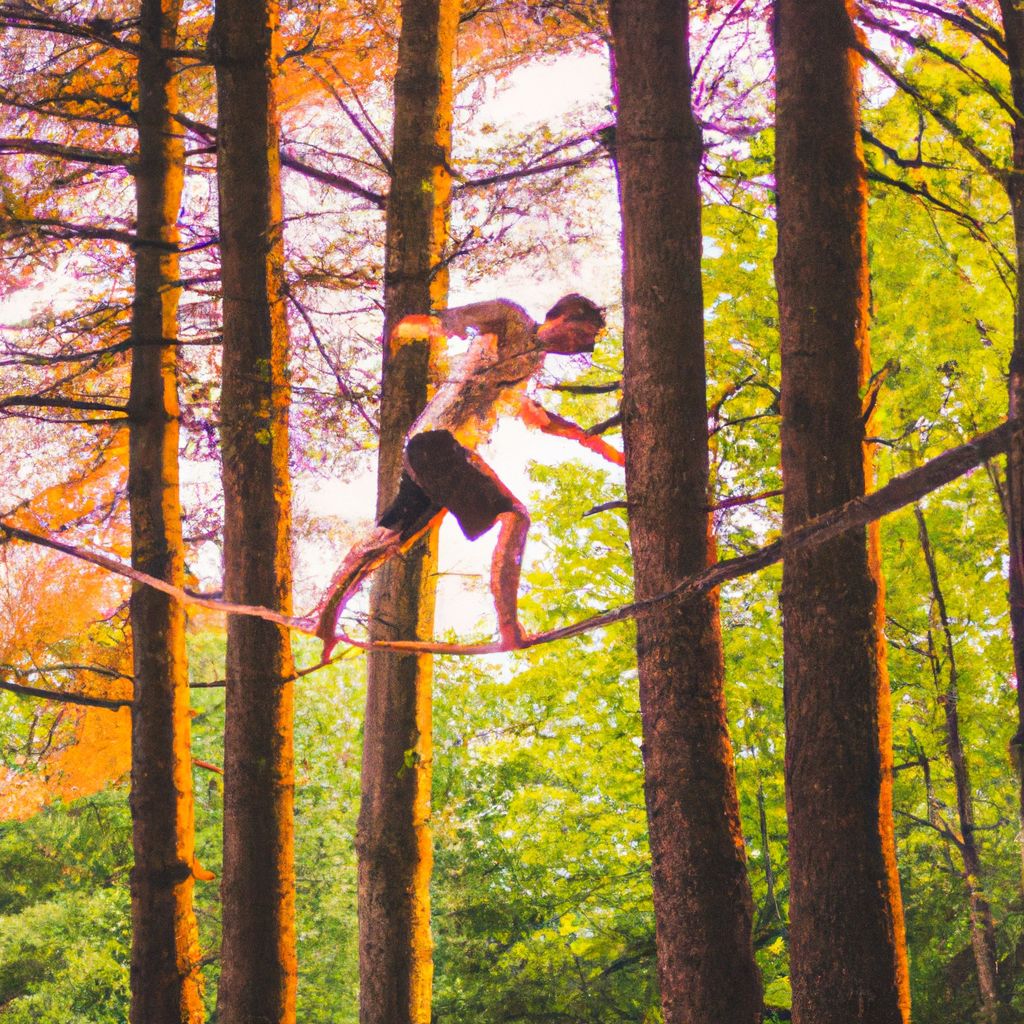- Introduction to the Concept of Slackline Walking
- Historical Background of Slackline Walking
- The Physical and Mental Benefits of Slackline Walking
- Equipment Needed for Slackline Walking
- Safety Measures and Precautions in Slackline Walking
- Basic Techniques in Slackline Walking
- Advanced Techniques in Slackline Walking
- Famous Slackline Walkers and Their Achievements
- How to Make Slackline Walking a Regular Routine
- Conclusion: The Joy and Challenges of Slackline Walking
Introduction to the Concept of Slackline Walking
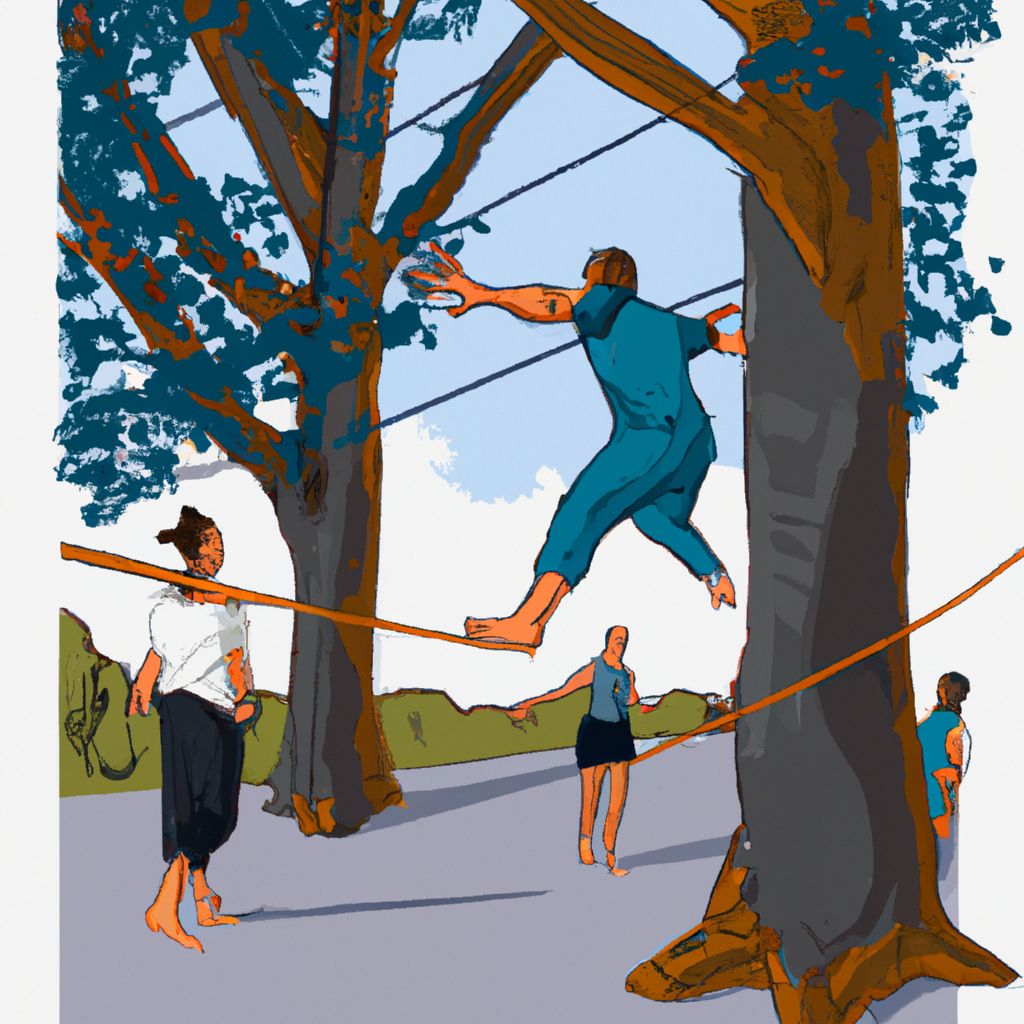
Slackline walking, also known as slacklining, is an adventure sport that involves walking or balancing along a suspended length of flat webbing tensioned between two anchors. This high-intensity activity is often compared to tightrope walking; however, unlike a tightrope, a slackline is not rigid but stretches and bounces like a long and narrow trampoline. The dynamic nature of the line allows for impressive tricks and stunts, making slacklining not just a sport but an art form.
Originally practiced by climbers to improve their balance, slacklining has evolved into a standalone discipline with a dedicated following. The sport has its roots in the 1980s when climbers in Yosemite National Park started slacklining in their spare time. Today, slackline walking has blossomed into a global phenomenon, with enthusiasts known as 'slackers' pushing the boundaries of what's possible on a 2-inch wide piece of webbing.
Slacklining encompasses several sub-disciplines, including tricklining (performing aerial stunts), highlining (balancing at great heights), and waterlining (slacklining over water), each offering a unique set of challenges and thrills. This adrenaline-fueled sport tests not only your physical strength but also your mental fortitude, as it requires intense focus, concentration, and body control.
While it may seem like a daunting activity, slacklining is highly accessible and can be enjoyed by individuals of all ages and fitness levels. With the right equipment and a little patience, anyone can learn to walk the line.
Historical Background of Slackline Walking

The history of slackline walking is as fascinating and dynamic as the sport itself. This unique and thrilling discipline has its roots in the 1980s when two rock climbers in Yosemite National Park, California, started experimenting with balancing on nylon webbing. These pioneers, Adam Grosowsky and Jeff Ellington, initially used slacklining as a pastime and a way to maintain balance and strength when they weren't climbing.
The practice quickly spread among the climbing community as an excellent training tool for enhancing core strength and improving focus. As climbers began to push the boundaries of slacklining, they started performing tricks and stunts on the line, leading to the birth of 'tricklining'.
Over the next few decades, slacklining grew from a niche activity practiced by climbers to a global sport enjoyed by people of all walks of life. In the early 2000s, 'highlining' emerged as a new sub-discipline, with slackliners testing their nerve and skills on lines suspended hundreds of feet in the air.
Today, slacklining is recognized and practiced worldwide, with international competitions, dedicated gear manufacturers, and an ever-growing community of enthusiasts. Despite its relatively short history, slacklining has made a significant impact on the world of adventure sports, proving that the only limit to what you can achieve on a slackline is your own imagination.
The Physical and Mental Benefits of Slackline Walking
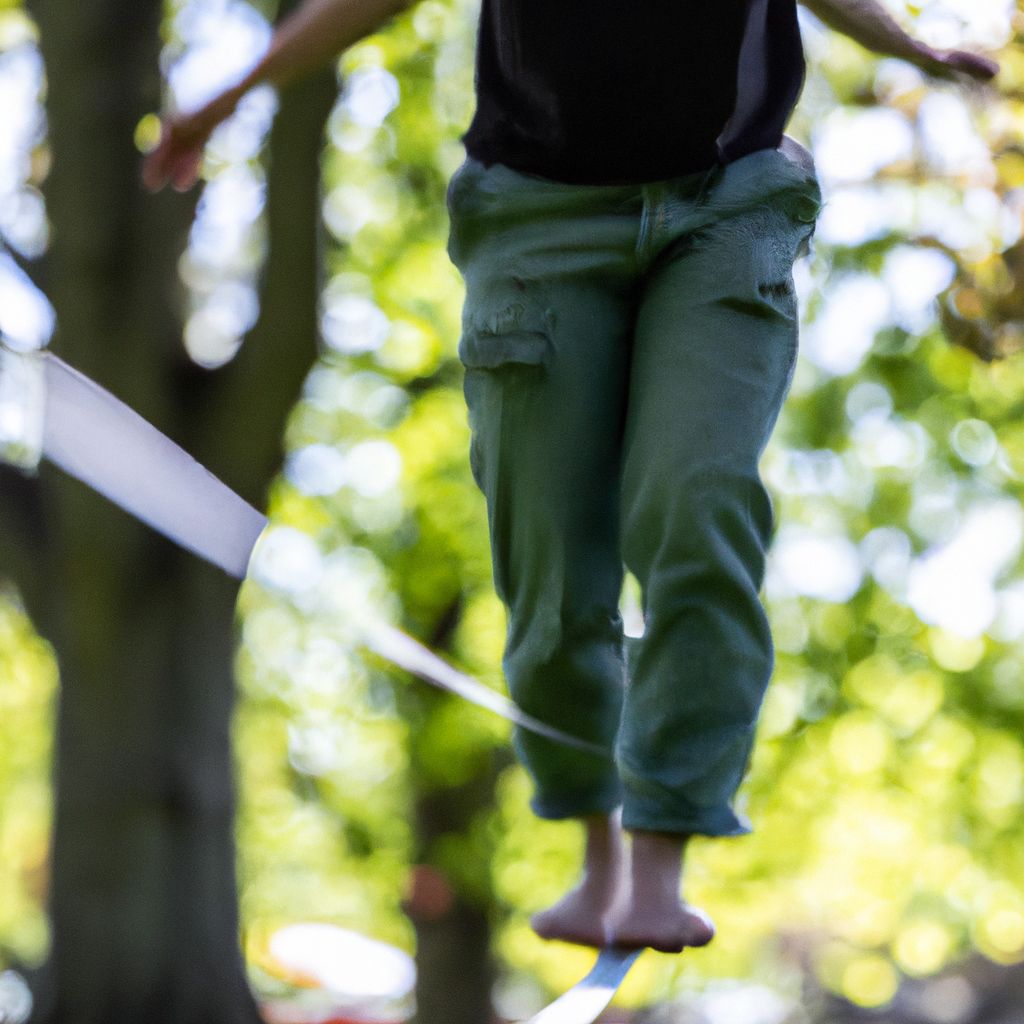
Slackline walking offers an exciting blend of physical and mental benefits, making it a uniquely holistic exercise. As a full-body workout, slacklining engages your core muscles, improves posture, and enhances balance and coordination. The act of maintaining stability on the line recruits a variety of muscle groups, from your legs and back to your abdominal and shoulder muscles, resulting in a comprehensive strength-training exercise.
A study published in the Journal of Strength and Conditioning Research found that regular slacklining can significantly improve lower body strength and trunk endurance. The sport is also beneficial for rehabilitating injuries, particularly in the lower extremities, as it promotes proprioception - the awareness of the position and movement of the body in space.
But the benefits of slacklining extend beyond physical fitness. The sport is also a powerful mental exercise, requiring concentration, focus, and calmness under pressure. The meditative aspect of slacklining can reduce stress, boost mood, and even enhance cognitive function. Research published in the journal PLOS ONE suggests that slacklining can improve working memory and attention, underscoring the sport's potential as a brain-training tool.
Whether you're seeking a new fitness challenge, a way to unwind, or a means to sharpen your mental acuity, slacklining delivers on all fronts. Its combination of physical exertion and mental discipline makes it a well-rounded and effective form of exercise.
Equipment Needed for Slackline Walking

Getting started with slackline walking requires a few essential pieces of equipment. While the specific gear might vary depending on the type of slacklining you're interested in (such as tricklining, highlining, or waterlining), some basic items are universally needed.
The most fundamental piece of equipment is, of course, the slackline itself. Slacklines are typically made from polyester or nylon webbing and come in various lengths, widths, and tensions to accommodate different skill levels and styles. Beginners often start with a line that is 1-2 inches wide and 15-25 feet long, which provides greater stability and is easier to balance on.
In addition to the slackline, you'll need a set of anchors to secure the line. These can be sturdy trees, posts, or artificial structures designed specifically for slacklining. It's important to use tree protection pads when anchoring your slackline to trees to prevent damage to the bark.
A ratchet system is also needed to tension the slackline. This device allows you to adjust the tightness of the line to your liking and is typically included with most slackline kits. For safety, it's crucial to ensure that your ratchet is high-quality and durable.
While not strictly necessary, some beginners find a balance aid such as a slackline helper or a long pole useful for maintaining stability during their initial attempts.
For more advanced forms of slacklining, additional equipment such as harnesses, carabiners, and safety lines may be required. Always remember to prioritize safety when practicing slacklining and use the appropriate gear for your skill level and the type of slacklining you're undertaking.
Safety Measures and Precautions in Slackline Walking
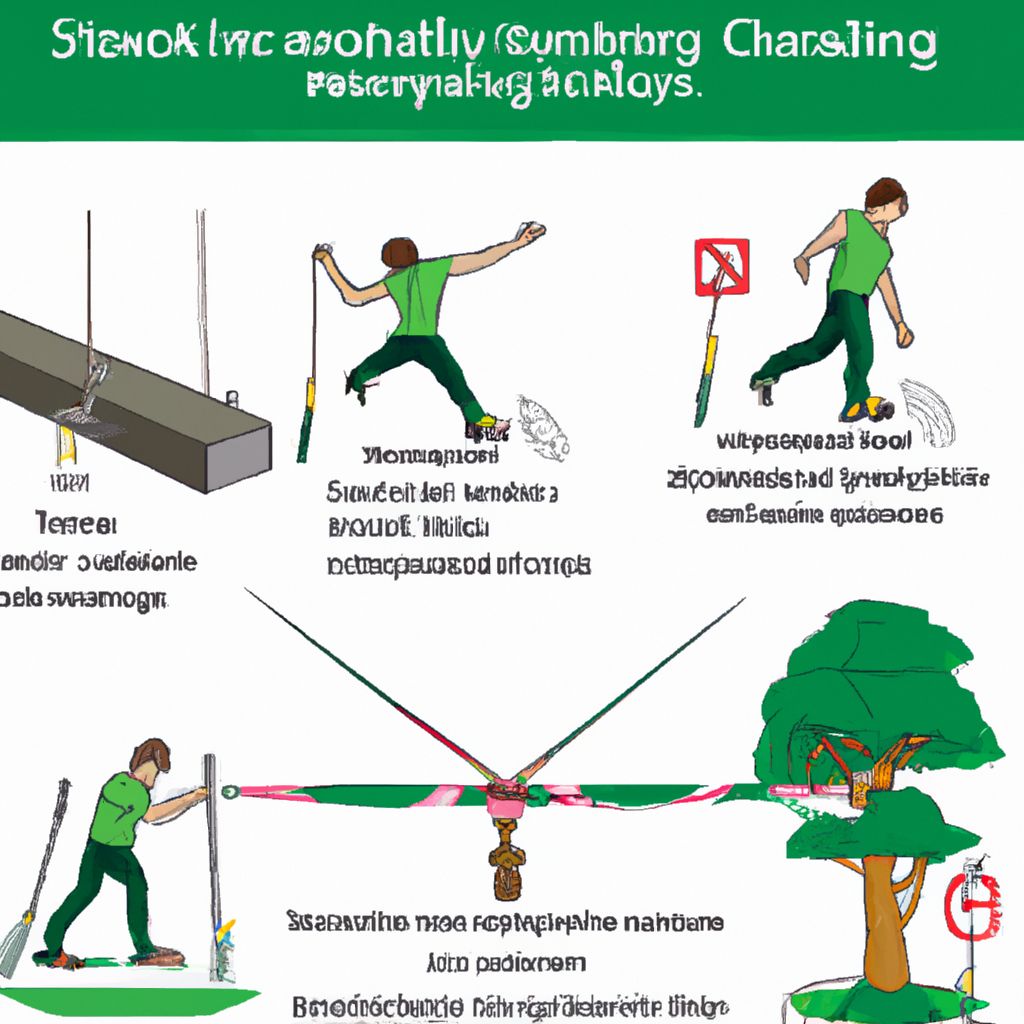
As with any adventure sport, safety is paramount in slackline walking. While the sport is generally safe when practiced correctly, it's essential to take certain precautions to prevent injuries and ensure a positive slacklining experience.
Firstly, always inspect your equipment before use. Check the slackline, ratchet, and anchors for any signs of wear or damage. If any part of your gear appears compromised, do not use it. Regular maintenance and replacement of worn-out equipment can prevent accidents.
When setting up your slackline, choose your anchors carefully. They should be sturdy and stable, such as large trees or specially designed slackline posts. Always use tree protection when anchoring to trees to preserve the bark and the health of the tree. The ground beneath your slackline should be flat and free of sharp objects, and the area around your slackline should be clear of bystanders and obstacles.
Beginners are advised to keep their slackline low to the ground, ideally no more than 1-2 feet high. As your skill level increases, you may raise the height of the line, but always remember that the higher the line, the higher the risk. Highlining or slacklining at significant heights should only be attempted by experienced practitioners with the appropriate safety gear, such as a harness and a backup line.
Never slackline alone, especially as a beginner. Having a spotter can be invaluable in preventing falls and injuries. Moreover, it's advisable to warm up before you start slacklining and to learn proper falling techniques to minimize the risk of injury.
Finally, always listen to your body. If you feel tired or experience pain while slacklining, take a break. Overexertion can lead to loss of balance and potential injuries. By practicing caution and adhering to these safety measures, you can enjoy the thrill and challenge of slackline walking while minimizing risks.
Basic Techniques in Slackline Walking

Mastering slackline walking requires practice and patience, but knowing the basic techniques can significantly shorten your learning curve. Here are some fundamental steps to help you get started:
Mounting the Slackline: Start by placing one foot (usually your dominant foot) on the line, keeping it parallel to the slackline. Using your arms for balance, push off gently with your other foot and shift your weight onto the foot on the line. Try to keep your body weight over your foot on the slackline, maintaining a slight bend in your knee for stability.
Balancing: Once you're standing on the slackline, focus on a point at the end of the line and keep your eyes fixed on it. This helps maintain balance. Extend your arms to your sides and use them to make minor balance adjustments. Remember to keep your core engaged and stand tall, as good posture is key to maintaining balance.
Walking: To start walking, slowly shift your weight onto your front foot. Then, lift your back foot off the line and place it in front of the other foot. Always keep one foot on the line while the other is moving. Repeat this process, taking slow, deliberate steps. Ensure your foot is centered and your toes are pointed forward with each step.
Remember, it's normal to shake or sway while slacklining, especially as a beginner. This is your body's way of finding balance. With time and practice, you'll become more stable and confident on the line.
It's also important to learn how to fall safely. Try to land on your feet and roll to absorb the impact. Always dismount the line if you feel you're losing control to avoid falling unexpectedly.
Finally, don't rush your progress. Slacklining is a sport of patience and persistence, so take your time and enjoy the process.
Advanced Techniques in Slackline Walking
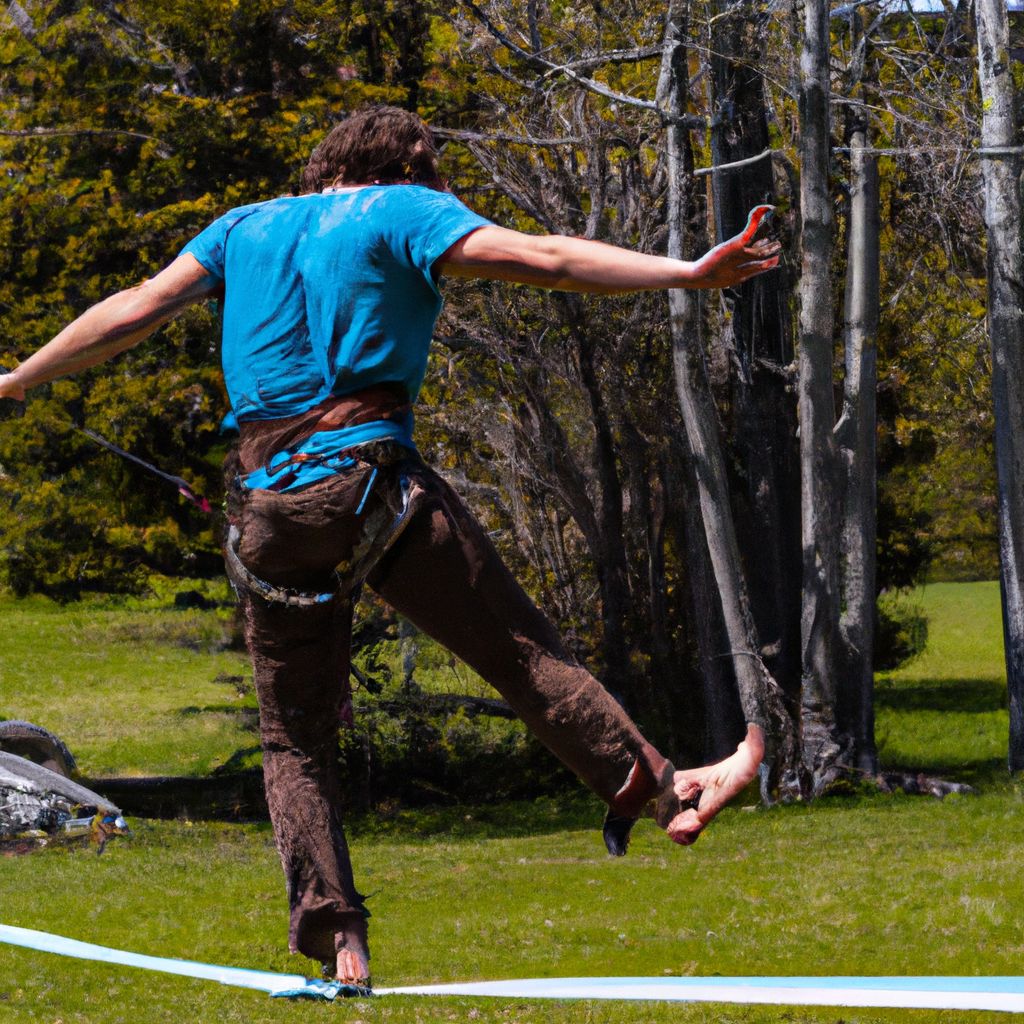
Once you've mastered the basic techniques in slackline walking, you may want to start exploring more advanced tricks and maneuvers. These movements not only add variety and excitement to your slacklining practice but also help enhance your balance, agility, and coordination. Here are a few advanced techniques to consider:
Turning: Turning around on a slackline can be a tricky maneuver, but it's a valuable skill, especially for longlining. Start by shifting your weight onto one foot. Then, pivot on your heel or toes, turning your body to face the opposite direction. Maintain your balance by keeping your arms extended and your gaze fixed on a point at the end of the line.
Jumping: Jumping on a slackline requires a strong sense of balance and control. Begin by bending your knees and pushing off with both feet. Try to land on the balls of your feet and absorb the impact by bending your knees. It's essential to keep your core engaged and your arms out for balance throughout the jump.
Sitting and Standing: Transitioning from sitting to standing is a fun and challenging slackline trick. Start by sitting on the line with your legs extended in front of you. Then, swing one leg around the line and use it as a pivot to rotate your body and stand up. This move requires strength, flexibility, and control.
Kneeling: Kneeling on the slackline can help improve your balance and core strength. Start from a standing position, then carefully lower one knee onto the line, followed by the other. Keep your hands out for balance and your gaze forward. To stand up again, reverse the process, raising one knee at a time.
Remember, these advanced maneuvers should be practiced with caution. Always have a spotter present and consider using a crash pad or similar safety measures until you're confident with your new trick. As with any skill, practice and patience are key to mastering these advanced slackline techniques.
Famous Slackline Walkers and Their Achievements

The world of slackline walking boasts numerous talented and dedicated athletes who have pushed the boundaries of the sport. Here are a few prominent slackliners and their remarkable achievements:
Dean Potter: An American free climber, alpinist, BASE jumper, and highliner, Dean Potter was a pioneer in the world of slacklining. He was famous for his free solo ascents and for walking highlines without a safety leash. One of his most notable feats was walking a 180-foot-long highline at Lost Arrow Spire in Yosemite National Park in 2003 without a safety leash.
Faith Dickey: Known as one of the leading female highliners, Faith Dickey holds multiple world records in the sport. In 2012, she set a Guinness World Record for the longest highline walk by a female, traversing a line spanning 200 feet.
Alex Mason: A competitive slackliner and Red Bull athlete, Alex Mason is a former world champion in tricklining. At just 16 years old, he won the 2010 Teva Mountain Games, making him the youngest slackline world champion in history.
Friedi Kühne: This German slackliner is known for his daring highline walks. In 2019, Kühne set the world record for the longest free solo highline walk, crossing a 110-meter line in Switzerland without a safety leash.
These slackliners and others like them have not only achieved remarkable personal feats but also played a significant role in advancing the sport of slackline walking. Their skill, courage, and innovation continue to inspire new generations of slackliners worldwide.
How to Make Slackline Walking a Regular Routine
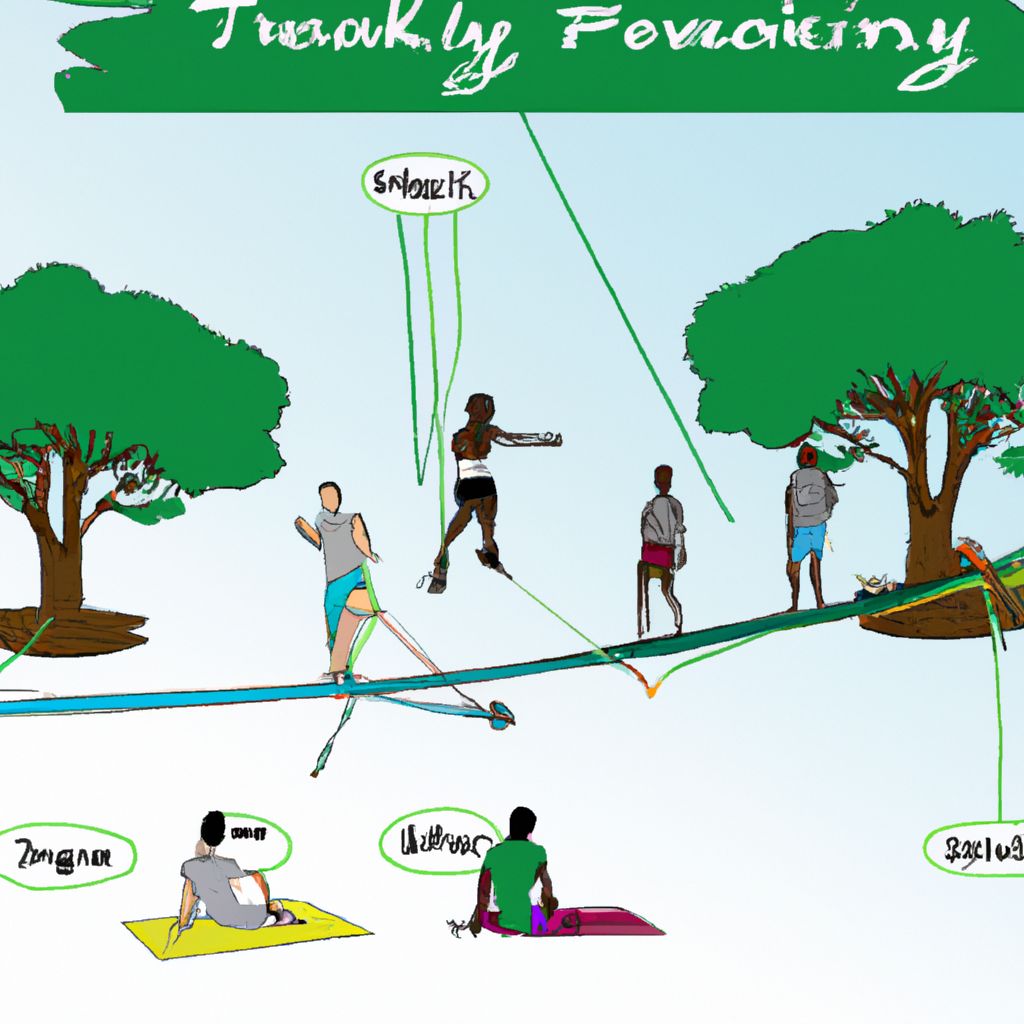
Integrating slackline walking into your regular routine can take a bit of planning and discipline, but the physical and mental benefits make it well worth the effort. Here are some steps you can take to make slacklining a regular part of your lifestyle:
Set a Schedule: Like any other exercise, consistency is key in slacklining. Set aside specific days and times for slacklining each week, and treat these sessions as non-negotiable appointments with yourself. Even 15-30 minutes of slacklining a few times a week can lead to significant improvements over time.
Start Small: If you're new to slacklining, start with short, manageable sessions and gradually increase your time on the line as your endurance and skills improve. Pushing yourself too hard too soon can lead to burnout or injury.
Vary Your Practice: To keep your slacklining routine fresh and challenging, try incorporating different techniques and tricks into your sessions. This not only makes your practice more interesting but also helps develop balance, strength, and agility.
Find a Slacklining Community: Joining a local slacklining group or finding a slacklining partner can make your practice more enjoyable and motivating. Plus, more experienced slackliners can offer valuable tips and guidance.
Use the Right Equipment: Having your own slackline set allows you to practice whenever and wherever it's convenient. Ensure your gear is safe and suitable for your skill level.
Listen to Your Body: Rest and recovery are just as important as consistent practice. If you're feeling tired or sore, give your body time to rest and recover before your next slacklining session.
By incorporating these strategies into your routine, you can make slackline walking a regular part of your exercise regimen and enjoy the myriad benefits this unique sport has to offer.
Conclusion: The Joy and Challenges of Slackline Walking
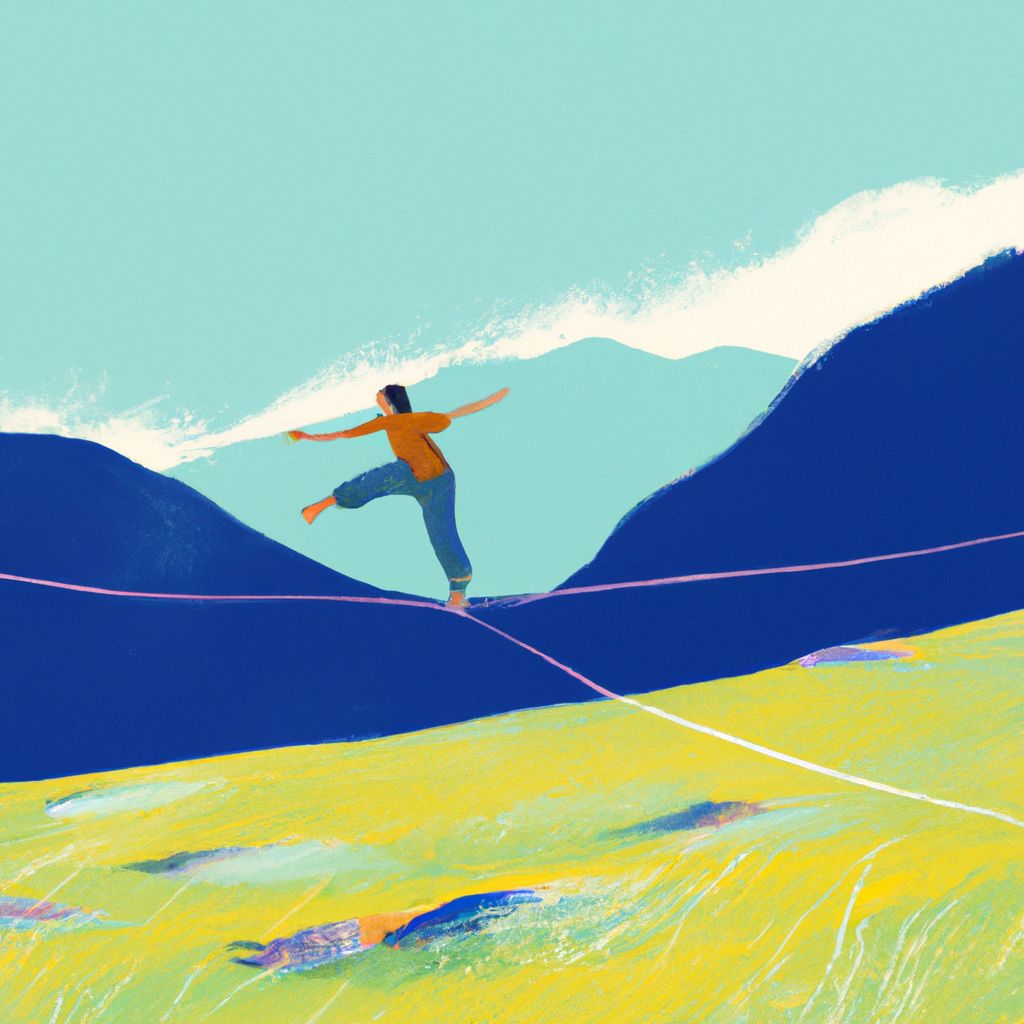
Slackline walking is more than just a sport or a form of exercise. It's an exhilarating blend of physical discipline, mental focus, and artistic expression that offers a unique challenge to its practitioners. The joy of slacklining comes not just from mastering a trick or crossing a long line, but from the journey of learning and self-discovery that takes place on the line.
Whether you're a seasoned slackliner pushing the boundaries of what's possible, or a beginner taking your first shaky steps, the world of slacklining is one filled with endless possibilities and rewards. It's a sport that demands patience and persistence, but the feeling of defying gravity, achieving balance, and moving in harmony with the line is truly incomparable.
So, if you're seeking a new challenge, a unique way to stay fit, or a means to boost your concentration and mental agility, consider stepping onto a slackline. The journey may be challenging, but the rewards are truly enriching. As the slacklining community often says, "Keep it slack!"


